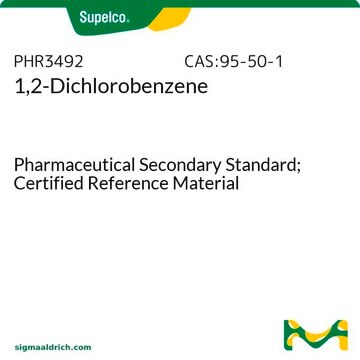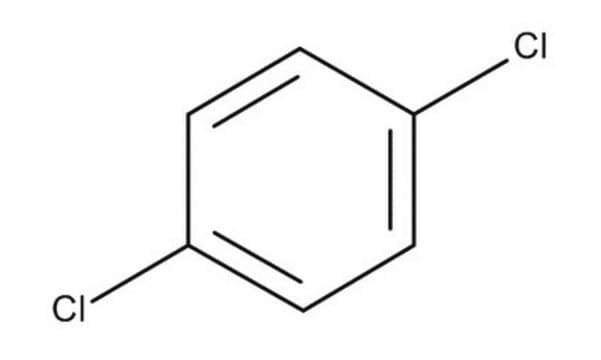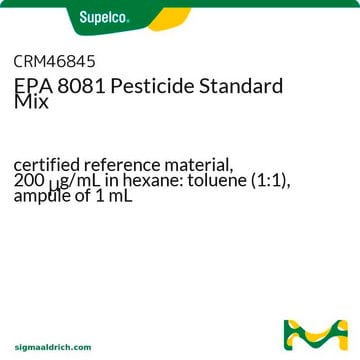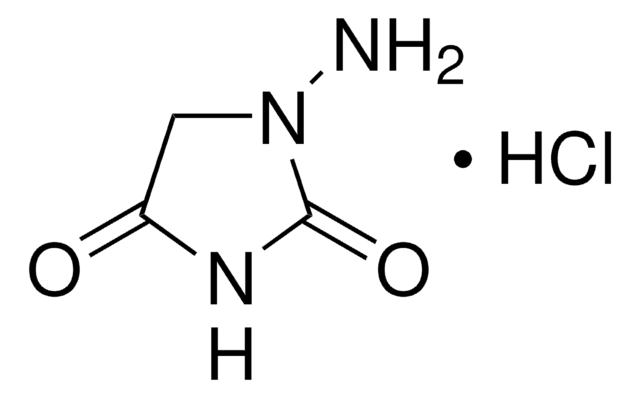推薦產品
等級
certified reference material
TraceCERT®
產品線
TraceCERT®
CofA
current certificate can be downloaded
包裝
ampule of 1 mL
濃度
5000 μg/mL in methanol
技術
HPLC: suitable
gas chromatography (GC): suitable
應用
agriculture
cleaning products
cosmetics
environmental
food and beverages
personal care
形式
single component solution
儲存溫度
2-8°C
SMILES 字串
Clc1ccc(cc1)Cl
InChI
1S/C6H4Cl2/c7-5-1-2-6(8)4-3-5/h1-4H
InChI 密鑰
OCJBOOLMMGQPQU-UHFFFAOYSA-N
尋找類似的產品? 前往 產品比較指南
一般說明
應用
其他說明
法律資訊
訊號詞
Danger
危險分類
Acute Tox. 3 Dermal - Acute Tox. 3 Inhalation - Acute Tox. 3 Oral - Aquatic Chronic 3 - Flam. Liq. 2 - STOT SE 1
標靶器官
Eyes
儲存類別代碼
3 - Flammable liquids
水污染物質分類(WGK)
WGK 1
閃點(°F)
51.8 °F - closed cup
閃點(°C)
11 °C - closed cup
個人防護裝備
Eyeshields, Faceshields, Gloves
Active Filters
我們的科學家團隊在所有研究領域都有豐富的經驗,包括生命科學、材料科學、化學合成、色譜、分析等.
聯絡技術服務









